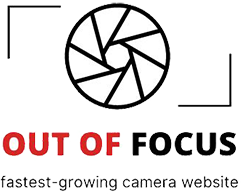
Transform your digital chaos into a streamlined clutter-free workflow with a robust file management system that adapts to your growing collection. Modern photographers generate thousands of images monthly, making efficient organization not just a luxury, but a professional necessity. Whether you’re tracking client deliverables or preserving precious memories, a well-structured digital filing system serves as your foundation for creative success.
Implementing the right system dramatically reduces image search time from minutes to seconds, automates backup procedures, and ensures version control across multiple devices. Leading photographers and studios consistently report 40% faster project delivery and 60% reduced storage costs after adopting systematic file management protocols. The digital revolution has transformed how we capture moments – now it’s time to transform how we preserve them.
This comprehensive guide combines battle-tested organizational principles with cutting-edge automation tools, helping you build a sustainable system that grows with your photography business. Whether you’re managing a handful of personal projects or orchestrating multiple commercial shoots, these strategies will help you maintain control over your digital assets while maximizing creative output.
Why Traditional File Management Falls Short for Photographers
Traditional file management methods, while familiar, often create significant hurdles for photographers trying to maintain an efficient workflow. Many photographers start by organizing their photos in basic folder structures, using dates or event names, only to find this system buckling under the weight of growing collections.
The most common pitfall is the “single folder syndrome,” where photographers dump all their images into one location, promising themselves they’ll organize them later. This leads to countless hours spent searching for specific images and the frustration of duplicate files scattered across various folders.
Another significant challenge lies in version control. When editing photos, photographers often create multiple versions of the same image, leading to confusion about which is the final edit. Without a proper system, these versions can quickly become unmanageable, eating up valuable storage space and creating uncertainty about which file to deliver to clients.
Metadata management presents another crucial limitation of traditional systems. Basic folder structures don’t effectively leverage the rich information embedded in image files, making it difficult to search for photos based on camera settings, location data, or other technical details that could be valuable for future reference or learning purposes.
Backup consistency becomes increasingly challenging with traditional methods. Photographers often find themselves with inconsistent backups across multiple drives, unsure if they’ve preserved all their important work. This uncertainty can lead to either excessive duplicate backups or, worse, gaps in their archive protection.
The collaborative aspects of photography work also suffer under traditional file management. Sharing folders with clients or team members often results in broken file paths, lost edits, or confusion about file versions. This can damage professional relationships and create unnecessary stress during project delivery.
As photography collections grow, these limitations compound, leading to decreased productivity, missed opportunities, and potential loss of valuable work. The inefficiencies of traditional file management ultimately cost photographers their most precious resource: time that could be better spent creating and editing images.

Building Your Digital Asset Management Foundation
Folder Structure That Makes Sense
A well-structured folder system is the foundation of efficient photo management. Let’s explore some proven file organization secrets that can transform your digital chaos into a streamlined workflow.
Start with a clear hierarchy: Year > Month > Event/Client. For example:
2024 > 01-January > Smith-Wedding
2024 > 02-February > Mountain-Landscapes
For commercial photographers, consider creating primary folders by client name, then subfolders for individual projects:
ClientName > ProjectType > Date
Use consistent naming conventions throughout. Avoid special characters and spaces; instead, use hyphens or underscores. Include the date at the beginning of folder names (YYYY-MM-DD format) for chronological sorting:
2024-01-15_Smith-Wedding
2024-02-03_Mountain-Landscapes
Create dedicated folders within each shoot for:
– RAW files
– Edited selects
– Final exports
– Client deliverables
– Behind-the-scenes content
For personal work, organize by theme or location:
Travel > Country > City > Date
Nature > Season > Location > Date
Remember to maintain consistency across all devices and backup systems. This structure should mirror exactly on your external drives and cloud storage, making file location intuitive regardless of where you’re accessing them from.
Naming Conventions That Stand the Test of Time
A consistent naming convention is your digital filing system’s foundation. Start with the date in YYYY-MM-DD format, followed by a descriptive name and any relevant categories. For example: “2024-01-15_WeddingShoot_Smith_RAW” immediately tells you when the photo was taken and what it contains.
Consider using underscores (_) instead of spaces to prevent compatibility issues across different operating systems. Avoid special characters, and stick to letters, numbers, and basic punctuation. This ensures your files remain accessible regardless of where you move them.
For client work, include the client’s name and project type: “2024-01-15_Portrait_Johnson_Family_Finals.” When working with multiple cameras or locations, add these identifiers: “2024-01-15_Wildlife_YellowstonePark_Canon5D.”
Version control is crucial – use suffixes like “_V1” or “_FINAL” to track iterations. For edited photos, consider adding editing status indicators: “_RAW,” “_EDIT,” or “_PRINT.”
Create a simple reference guide for your naming system and stick to it religiously. This consistency will save countless hours when searching for specific images later. Remember, the goal is to create file names that are both human-readable and logically sortable, making it easy to locate images even years after they were taken.

Smart Tools for Automated Organization
Photo Management Software Worth Your Time
When it comes to managing your growing photo collection, choosing the right Digital Asset Management (DAM) software is crucial for maintaining an efficient post-processing workflow. Let’s explore some standout options that have proven their worth in the photography community.
Adobe Lightroom remains the industry standard, offering a powerful combination of photo organization and editing capabilities. Its catalog system allows for seamless metadata management, keyword tagging, and smart collections that automatically organize photos based on custom criteria.
For those seeking alternatives, Capture One Pro provides superior tethering capabilities and advanced color editing tools, making it a favorite among studio photographers. Its catalogs can be session-based, perfect for organizing client shoots and commercial work.
ACDSee Photo Studio offers a cost-effective solution with robust organizing features and a user-friendly interface. Its facial recognition and advanced search capabilities make finding specific images a breeze, even in large collections.
For photographers who prefer a subscription-free option, ON1 Photo RAW combines powerful organizing tools with comprehensive editing features. Its browse module allows for fast culling and organization without the need to import photos into a catalog first.
When choosing among these essential photography software options, consider your specific needs: Do you need robust cataloging features? Will you be sharing catalogs with clients? How important is raw processing capability? The right choice will depend on your workflow requirements and budget constraints.
Remember, the best software is the one that fits seamlessly into your existing workflow while providing room for growth as your photography business or hobby evolves.
Automation Scripts and Workflows
Automation is a game-changer when it comes to managing your digital photo library efficiently. By implementing a time-saving workflow, you can reduce hours of manual organization to mere minutes.
Start by setting up watch folders that automatically sort incoming photos based on their metadata. For instance, configure your system to automatically move images into date-based folders upon import, or create rules that sort photos by camera model or shooting location. Popular tools like Adobe Bridge and Photo Mechanic offer robust automation features for this purpose.
Consider implementing batch processing scripts for routine tasks. You might create an action that automatically adds your copyright information, applies basic adjustments, and generates web-ready versions of your images. Tools like Hazel for Mac or File Juggler for Windows can monitor designated folders and automatically process files based on custom rules.
For cloud-based systems, services like Zapier or Microsoft Power Automate can create powerful automation chains. These might include automatically backing up new photos to multiple locations, generating low-resolution copies for client previews, or sending notification emails when specific folders are updated.
Remember to document your automation setup – a well-documented system ensures consistency and makes troubleshooting easier when needed. Start with simple automations and gradually build more complex workflows as your needs evolve.
Backup Strategies That Keep Your Files Safe

The 3-2-1 Backup Rule for Photographers
The 3-2-1 backup rule is a fundamental principle that every photographer should embrace to protect their precious images. This strategy ensures your photos remain safe even in worst-case scenarios, such as hardware failures, natural disasters, or theft.
Here’s how it works: maintain 3 copies of your files, store them on 2 different types of media, and keep 1 copy off-site. For photographers, this typically means:
First copy: Your primary working files, usually stored on your computer’s internal drive or a fast external drive for active editing.
Second copy: A local backup on a different type of storage medium, such as an external hard drive or NAS (Network Attached Storage) system. This provides quick access to your files if your primary storage fails.
Third copy: An off-site backup, preferably using a cloud storage service like Backblaze, Google Drive, or Amazon Photos. This protects your images from physical disasters that might affect your home or studio.
Implement this system using automated backup software to ensure consistency. Schedule your local backups to run daily or weekly, depending on how frequently you shoot, and configure your cloud backup to run continuously in the background. Remember to periodically verify your backups by testing file restoration – there’s nothing worse than discovering your backup system wasn’t working when you need it most.
This systematic approach provides peace of mind, knowing your irreplaceable images are protected with multiple layers of redundancy.
Cloud Storage Solutions for Photographers
Cloud storage has become an essential component of modern photography workflows, offering both security and accessibility for your precious images. Popular services like Google Drive, Dropbox, and Adobe Creative Cloud provide photographers with robust solutions for backing up and accessing their work from anywhere.
When selecting a cloud storage service, consider factors beyond just storage capacity. Look for features like automatic synchronization, version history, and the ability to preview RAW files. For instance, Google Photos offers AI-powered search capabilities, making it easier to find specific images based on content, location, or date.
Many professional photographers opt for a hybrid approach, combining multiple cloud services. You might use Google Drive for client delivery, Backblaze for complete system backups, and Adobe Creative Cloud for active editing projects. This strategy provides redundancy and specialized functionality for different aspects of your workflow.
To maximize cloud storage efficiency:
– Set up automatic upload features for new shoots
– Organize files using consistent folder structures
– Use selective sync to manage local storage space
– Enable two-factor authentication for security
– Regularly audit your storage usage and remove unnecessary files
Remember that cloud storage isn’t just about backup – it’s also about collaboration and accessibility. Services like Dropbox’s file sharing features can streamline client reviews and team collaborations, while mobile apps ensure you can access your portfolio anywhere.
Consider your internet connection speed and data caps when planning your cloud storage strategy, as large photo collections can require significant bandwidth for initial uploads and ongoing synchronization.

Real-World Implementation
Let’s explore how photographers implement digital file management systems in their daily workflows. Wedding photographer Sarah Chen manages thousands of images across multiple events using a date-based hierarchy. Her system starts with yearly folders (e.g., “2023_Weddings”), followed by subfolders using the format “YYYYMMDD_ClientName_EventType.” This structure allows her to quickly locate specific events, even years later.
Landscape photographer Mike Torres takes a different approach, organizing his work by location and shooting conditions. His primary folders are organized by country and region, with subfolders indicating specific locations and weather conditions. For instance: “USA/Colorado/RockyMountains/Sunrise.” This system helps him track seasonal changes and revisit locations under similar conditions.
Commercial photographer Lisa Wong handles multiple clients and projects simultaneously. She implements a client-based structure: “ClientName/ProjectDate/Category.” Each project folder contains RAW, edited, and delivered subfolders, maintaining clear separation between work stages. She also maintains a standardized naming convention: “ClientName_ProjectType_YYYYMMDD_SequenceNumber.”
Wildlife photographer James Peterson combines date and location-based organization. His folder structure includes the date, location, and species photographed: “2023/Africa/Kenya/Masai_Mara/Lions.” He maintains separate catalogs for different expeditions, making it easier to locate specific species or locations for future reference.
Studio photographer Maria Rodriguez uses a hybrid system for her portrait sessions. Her main folders are organized by year and month, with client subfolders containing both the RAW files and various delivery formats. She implements color coding in her file management software to indicate project status: red for unprocessed, yellow for in progress, and green for completed and delivered.
These real-world examples demonstrate how flexible digital file management can be, adapting to different photography niches while maintaining organization and efficiency. The key is choosing a system that matches your workflow and consistently applying it across all projects.
Implementing a digital file management system might seem daunting at first, but the benefits far outweigh the initial setup effort. By organizing your digital assets systematically, creating consistent naming conventions, and establishing reliable backup routines, you’ll save countless hours of searching and protect your valuable work. Remember that the perfect system is one that works for you – start with the basics and gradually refine your workflow as needed. Whether you’re managing a few hundred family photos or tens of thousands of professional images, the principles we’ve discussed will help you maintain control over your digital library. Take the first step today by choosing one aspect of file management to implement, and build from there. Your future self will thank you for the time and effort invested in creating an organized, efficient, and secure digital workflow.





















